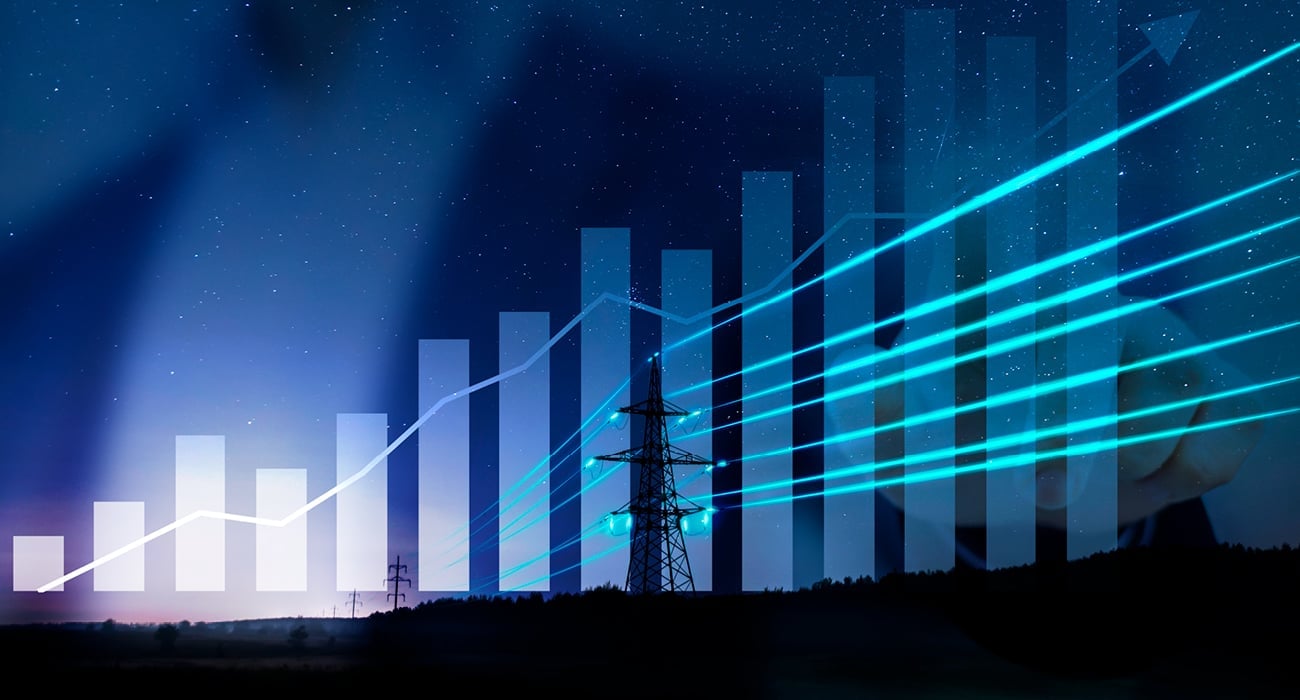As we start the new year, I’d really like to tell you that easier times are ahead. Sadly, I cannot promise this will be the case.
But what I can promise you is that we are here to support your business to manage the current challenges and optimise the way you use energy, ensuring you don’t pay any more than you need to.
So if you’re one the 80% of large consumers that now say energy is a board-level concern*, what are the main actions we’d recommend you consider?
Here are my top five energy ‘must dos’ for 2023:
1. Get visibility around consumption
If you can’t see it, you can’t manage it. That is an often repeated mantra in the energy industry. And I cannot stress this enough – get visibility of where you are using energy, when and how. That way, you can pinpoint and eliminate waste.
The regulatory-mandated transition from Non-Half Hourly to Half-Hourly metering later this year will help smaller business consumers go some way to achieving this. But for anyone with complex operations, sub metering and a good energy management system will allow you to better understand and optimise your power and gas consumption.
2. Audit your operations
How efficient is your operation? Are you taking advantage of the latest energy-saving technologies? Is your building management system minimising energy use? If you don’t know the answer to these and other key questions, then it’s likely you’re using more energy than you need to. So audit your sites to really understand what can be done to cut costs (as well as emissions). And if you need help, contact an expert. We have a team who can audit your business and show you where and how you can save money.
3. Develop a phased approach
Optimising energy use isn’t a once only action. New technologies, new approaches and new opportunities are emerging all the time. Look to implement what’s practical and affordable now, and create a plan for the longer term that you can revisit and revise as costs fall or the return on investment time reduces. It may be that you also need to wait for promising technologies to become commercially viable – such as low-carbon gas or green hydrogen. A phased plan can help to ensure you factor in many different possibilities and review your options regularly.
4. Assess on-site generation potential
Generating your own energy can significantly cut fuel costs and increase the energy resilience of your business. Indeed, our recent report The Future of Energy: The critical role of business in a zero-carbon world finds that many businesses have untapped potential to utilise renewable technologies to provide their own power, and that this could make a huge contribution to making the UK less reliant on imported gas. Do download our report here for more insight, or contact us if you’d like help assessing how on-site generation could fit into your business operations.
5. See net zero as an opportunity
By now, net zero should be on every business agenda, along with a plan of how to minimise and ideally eliminate all emissions in the run up to the UK’s 2050 deadline. This doesn’t have to be another regulatory headache. Net zero can genuinely deliver benefits in terms of cost saving and energy resilience for your business. Check out our Net Zero Calculator if you’d like to see how plotting a path to net zero translates to financial as well as emission savings. You can also read about what other businesses are doing.
If you’d like help with any of these points, do get in touch. For existing customers, your Client Lead for Account Manager is the best place to start. Or get in touch here.
*According to our Business Energy Tracker survey


/npm214%20Digital_H_UB100.jpg)
/npm214%20Digital_H_UB95.jpg)
/npm214%20Digital_H_UB141.jpg)
/npm214%20Digital_H_UB132.jpg)


/npm214%20Digital_H_UB101.jpg)
/npm214%20Digital_H_UB139.jpg)
/Author%20Profile%20Phillips_Sally_G.png)
